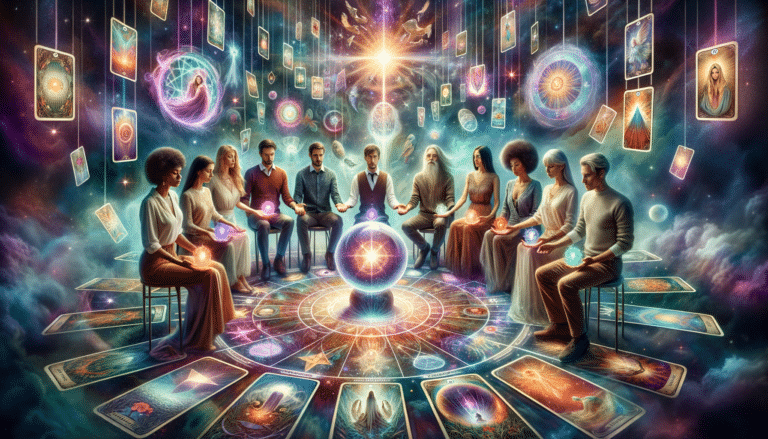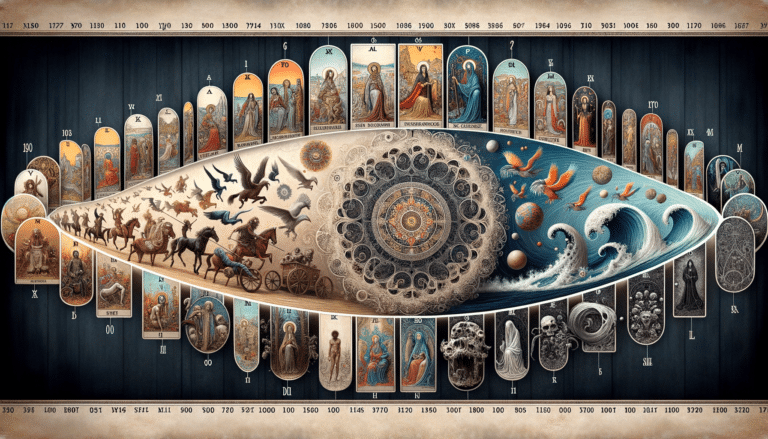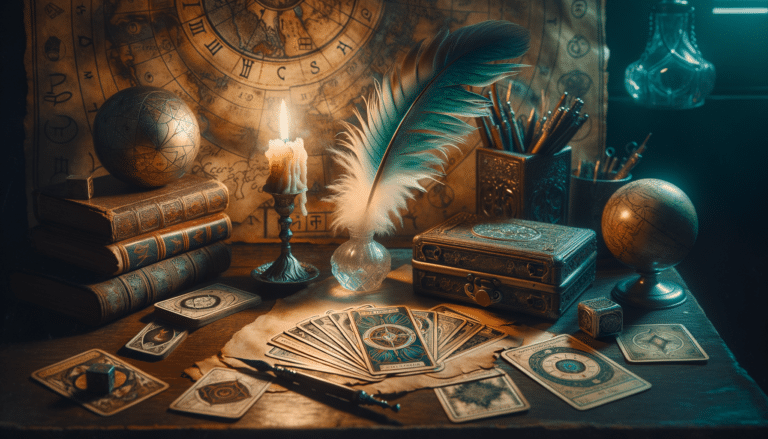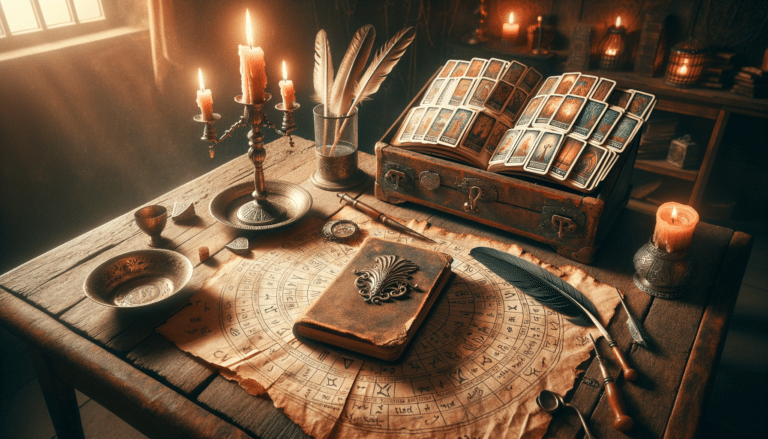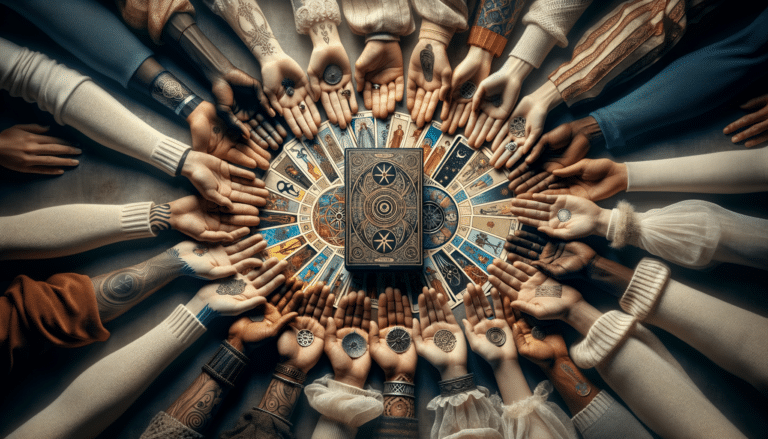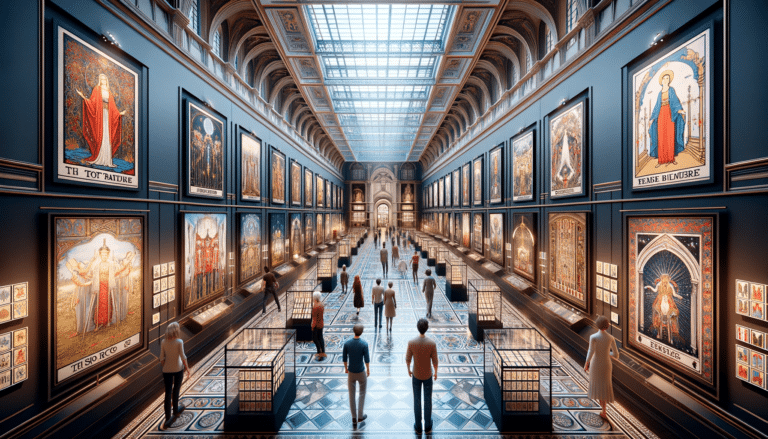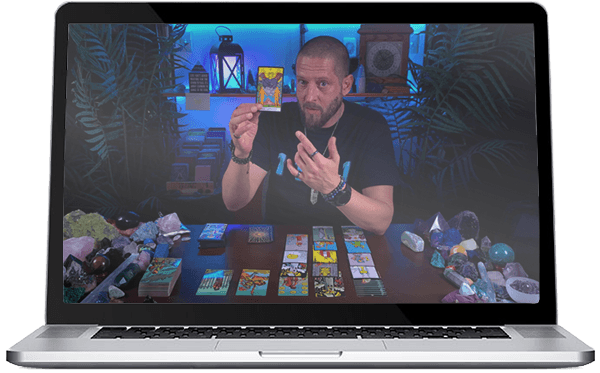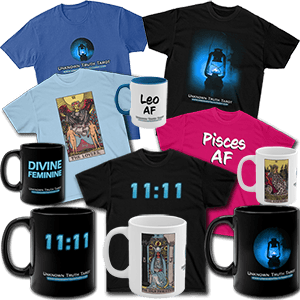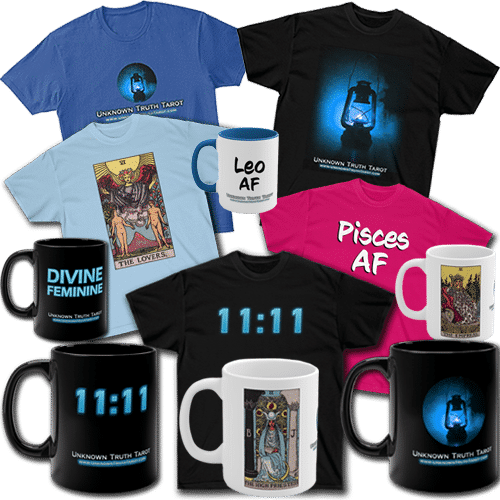The History of Tarot Card Suits: 11 Key Insights
Illustrate four tarot suits (Cups, Swords, Pentacles, Wands) as evolving timelines with symbols from different eras, transitioning from ancient to modern designs, amidst a mystical, ethereal background.
As you sift through the sands of time, uncovering the layered history of tarot card suits can feel like an archaeological dig into the human psyche. You’ll embark on a quest to trace the origins of these enigmatic cards, from their birth in 15th-century Europe to their modern incarnations.
Discover how tarot imagery evolved, shaped by cultural and esoteric influences, and how each suit came to embody the elements of earth, air, fire, and water.
You’ll explore the adaptation of suits from Italian to French and English interpretations, and delve into the cards’ significance within occult traditions.
With these 11 insightful tips, you’ll gain a deeper appreciation for the rich tapestry of symbolism that is woven into the tarot suits you see today, and how they continue to cast their spell in popular culture.
Key Takeaways
- Tarot cards trace their origins back to the mid-15th century in Europe.
- The evolution of tarot imagery reflects cultural, religious, and mystical traditions.
- The tarot suits correspond to the four classical elements – Cups (Water), Wands (Fire), Swords (Air), and Pentacles (Earth).
- Regional variations in tarot decks, such as those from Italy, add complexity and meaning to tarot readings.
Origins of Tarot Cards
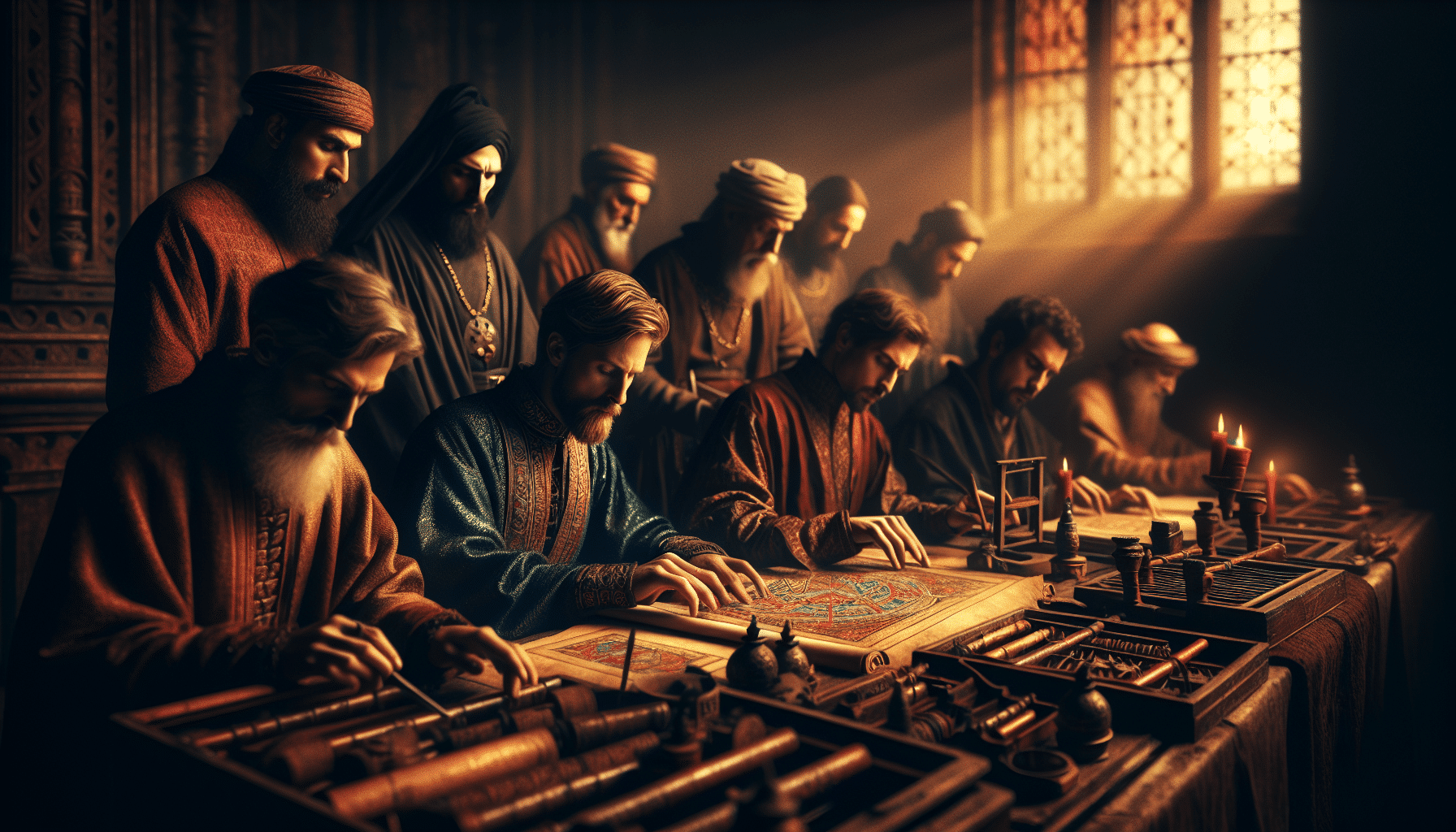
You’ll often find that tarot cards trace their mysterious origins back to the mid-15th century in Europe. Initially, they weren’t the mystical tools you know today, but rather a form of playing cards. These cards were hand-painted, a testament to the artists’ skill and the patrons’ wealth who could afford such luxuries. As card printing methods evolved, tarot became more accessible to the general populace.
The rise of the printing press revolutionized the production of tarot cards. Woodcuts and engravings allowed for the replication of intricate designs, enabling tarot decks to be produced in greater numbers and at a lower cost. This democratization of tarot was crucial in spreading its use beyond the elite.
However, as the popularity of playing cards increased, so did the attention of tax collectors. Playing card taxes were introduced as a way for governments to capitalize on the growing market. These taxes were often used as a means to control the production and distribution of cards, ensuring that only authorized printers could create them. This control over card printing methods helped standardize the appearance of tarot cards, paving the way for the familiar suits and symbolism you recognize today.
Evolution of Tarot Imagery
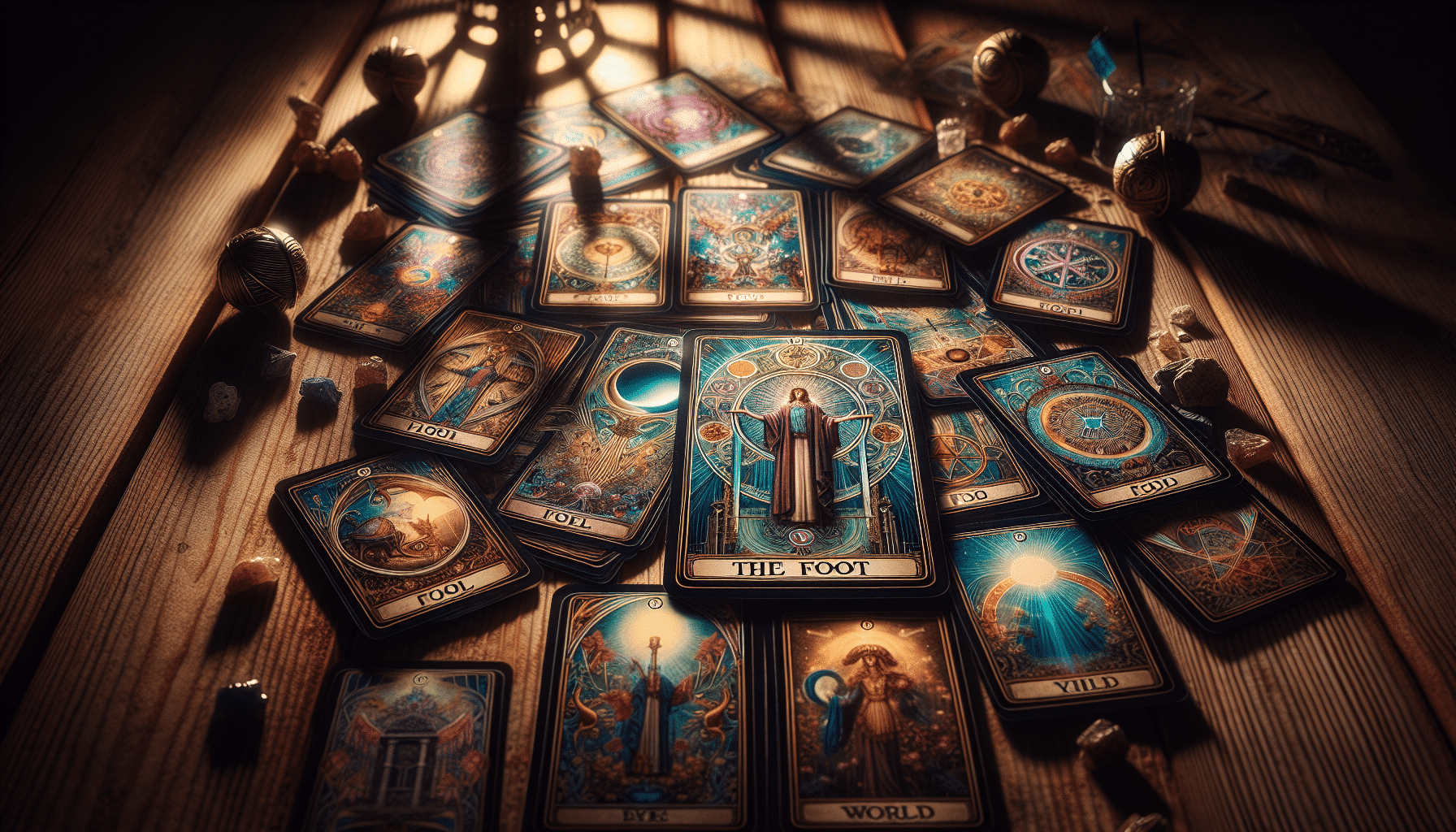
As you delve into the evolution of tarot imagery, it’s clear that the 78-card deck has undergone significant transformation from its pictorial beginnings. The visual refinement over the centuries reflects a rich Arcana development and a deeply symbolic journey, enhancing both the complexity and the interpretive potential of the cards.
Here’s how tarot imagery has evolved:
-
Rudimentary Illustrations: The earliest tarot cards were hand-painted and featured simplistic iconography. They served more pragmatic games rather than mystical purposes.
-
Esoteric Symbolism: With the rise of occult interest, imagery became layered with alchemical, astrological, and Kabbalistic symbols, offering a more profound spiritual dimension.
-
Artistic Flourishes: During the Renaissance, the artistry of the cards flourished, leading to more elaborate and aesthetically pleasing designs that mirrored the era’s artistic values.
-
Modern Interpretations: Today’s tarot decks incorporate a wide array of artistic styles, from traditional to contemporary, each adding a unique voice to the Arcana development and enabling a personalized symbolic journey.
Understanding these milestones in tarot’s visual history helps you appreciate the intricate tapestry of symbolism that each card in a modern deck represents. It’s a testament to the enduring power of imagery and its ability to convey complex narratives and insights.
Check out our Tarot Cards here…
Influences on Tarot Symbolism
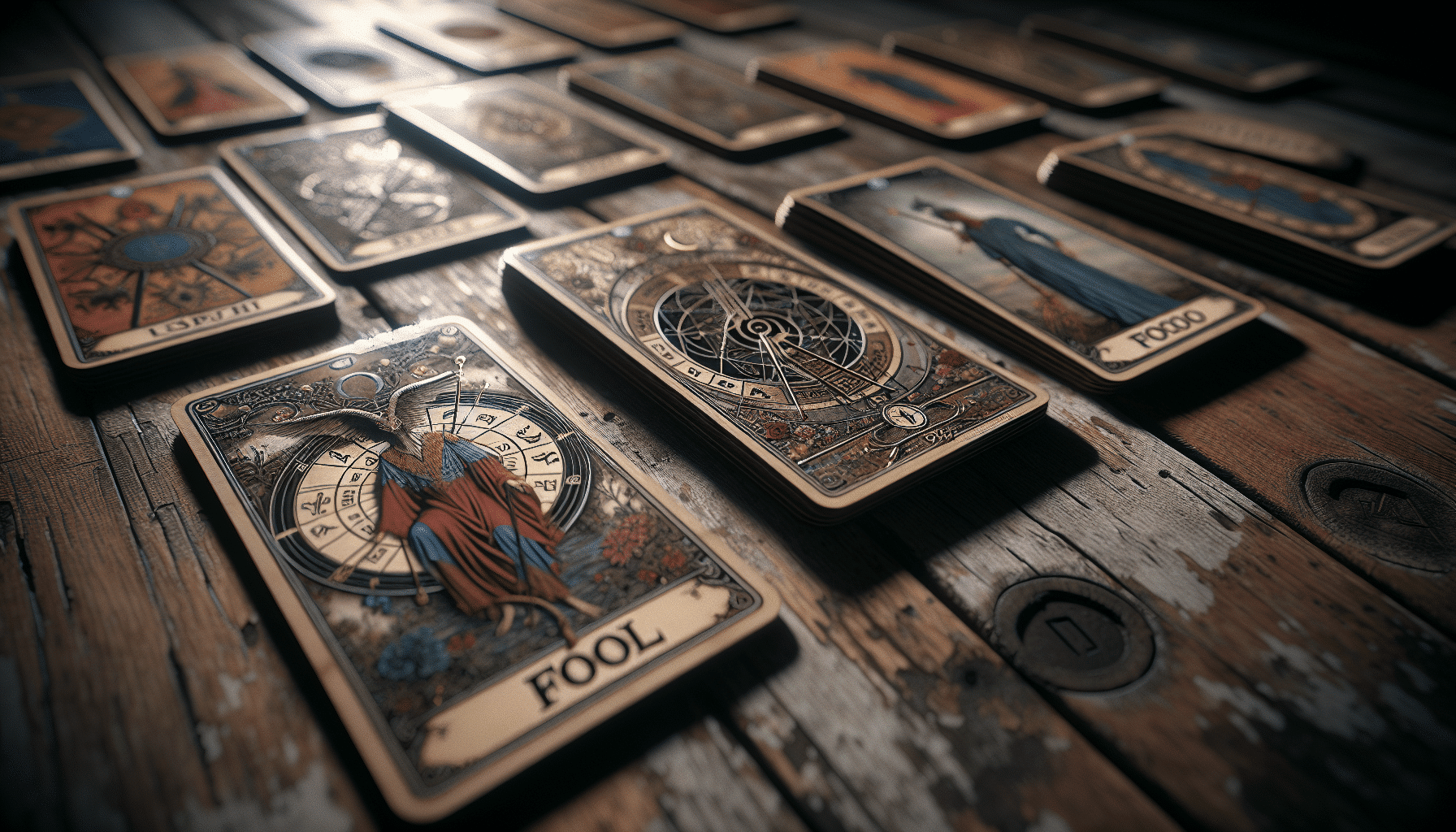
While exploring the historical journey of tarot suits, you’ll discover that cultural, religious, and mystical traditions have significantly shaped their symbolism. The cards are replete with arcane motifs that reach deep into the human psyche, tapping into universal symbolic archetypes. These archetypes resonate with our subconscious, providing a canvas upon which myriad interpretations can be painted.
As you delve deeper, you’ll notice that tarot imagery often reflects the societal norms and spiritual beliefs of the time when the cards were created or adapted. The inclusion of certain symbols – like cups, which can represent both the Holy Grail and the element of water – speaks to the blending of Christian iconography and classical elements. Swords, wands, and pentacles similarly carry layers of meaning, drawing from astrology, alchemy, and the natural world.
The rich tapestry of tarot’s visual language is thus a product of a historical melting pot. It’s a fusion of ideas that have traveled through the ages, from medieval Europe to the mystery traditions of ancient civilizations. Each card’s design is more than just an image; it’s a nexus of cultural narratives and esoteric wisdom, inviting you to interpret and find relevance in your own life journey.
Learn more with these tarot books here…
Tarot Suits and Elements

In exploring the tarot suits, you’ll find that each corresponds to one of the four classical elements, grounding their symbolism in natural forces. This connection enriches your readings, giving you a deeper understanding of the cards’ meanings. Elemental correspondences play a critical role in the interpretation of tarot, offering insights into emotional states, personality traits, and potential outcomes.
Here’s how the tarot suits align with the elements:
-
Cups: These cards are tied to the element of Water, reflecting emotions, relationships, and intuition.
-
Wands: Associated with Fire, this suit represents passion, inspiration, and willpower.
-
Swords: Corresponding to Air, Swords signify intellect, communication, and conflict.
-
Pentacles: Linked to Earth, they denote material aspects like wealth, health, and practicality.
Understanding these suit associations helps you tap into the energies at play in a reading. For instance, a dominance of Cups might suggest an emotionally charged situation, while an abundance of Pentacles could hint at financial or physical concerns.
Keep these elemental correspondences in mind, and you’ll add layers of meaning to your tarot practice, revealing the rich tapestry of insights the cards hold.
Learn even more secrets of history of tarot here…
Italian Tarot and Suit Variations
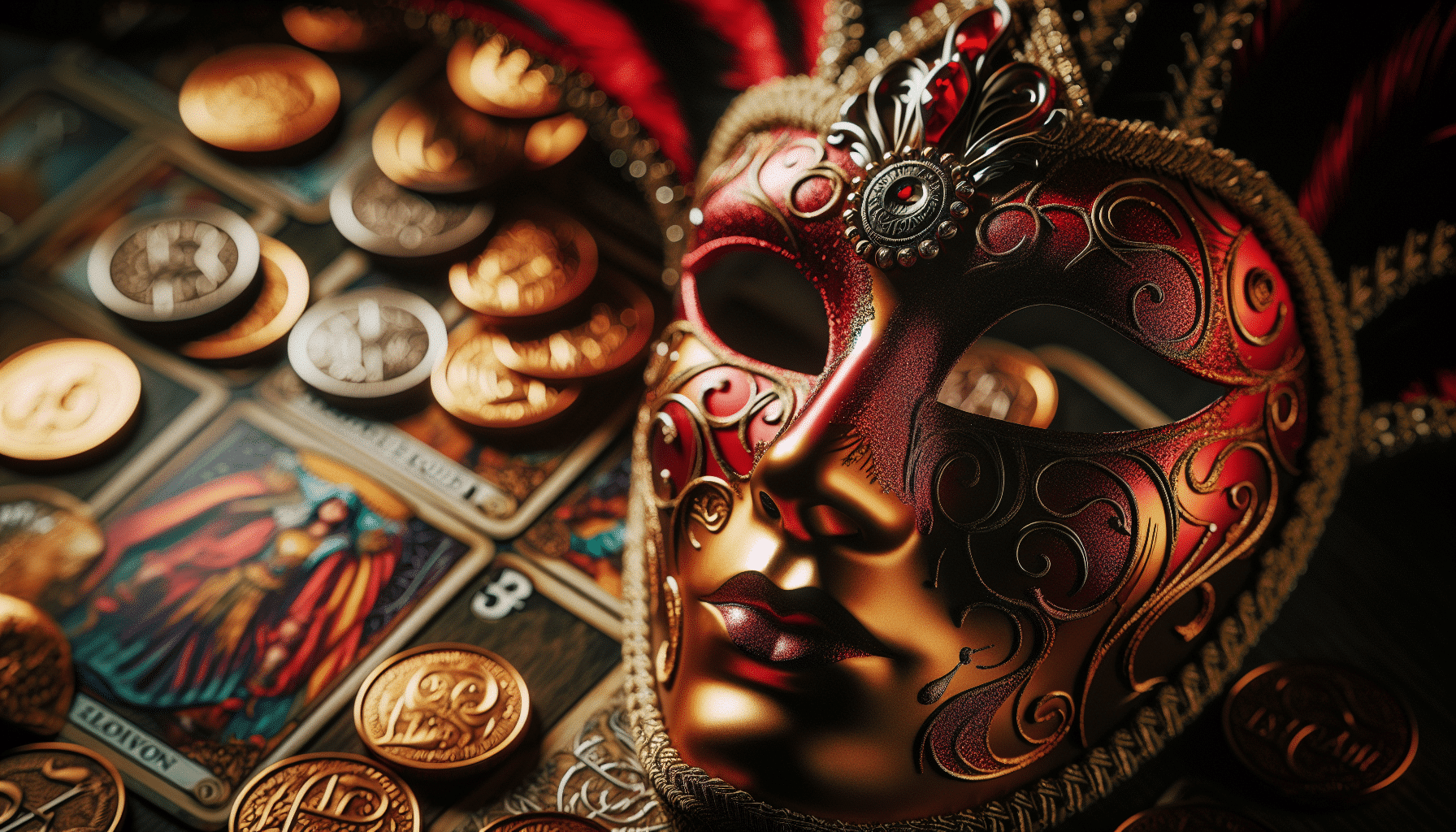
As you explore the rich tapestry of the tarot, it’s crucial to understand the roots of suit symbols, which originated in Italy. You’ll find that suits can vary significantly from region to region, reflecting diverse cultural influences.
Let’s examine how the Italian deck has evolved over time, giving rise to the variations you see in tarot today.
Suit Symbol Origins
Delving into suit symbol origins, you’ll discover the Italian Tarot’s rich tapestry of emblems, each with a story that reflects medieval societal structures and mysticism. These symbols aren’t just pretty pictures; they’re suit metaphors with deep cultural interpretations.
Here’s a glimpse into their significance:
- Cups: Representing the clergy, cups symbolize emotions and spirituality.
- Swords: Linked to nobility and the military, swords denote intellect and conflict.
- Coins (Pentacles): Associated with the merchant class, coins embody material wealth and physical well-being.
- Batons (Wands): Reflecting the peasantry, batons signify creativity and labor.
Understanding these icons helps you appreciate Tarot’s historical context and the collective values of the era.
Regional Suit Differences
Exploring the diverse landscapes of Tarot, you’ll notice that Italian decks differ markedly from their counterparts in suit symbols and interpretations. While some decks follow a suit standardization, Italian Tarots often showcase unique symbols like swords, cups, coins, and clubs, a variation that can be traced back to medieval times. These differences aren’t just historical footnotes; they add rich layers of meaning and complexity to readings.
As you delve deeper, you’ll find that collectors’ editions often celebrate these regional variations, offering a glimpse into the Tarot’s multifaceted past. Embrace the diversity in these decks, as each suit’s nuances contribute to a broader understanding of the Tarot’s symbolic language.
Italian Deck Evolution
You’ll discover that the Italian Tarot deck has undergone significant transformations, with its suits reflecting an evolution of symbols and meanings unique to the region’s cultural history. As you delve into the Italian Tarot, consider these key points in its evolution:
-
Deck Structure: Originally, the Italian decks featured suits like cups, swords, coins, and batons, which have persisted through time with slight modifications.
-
Regional Influence: Different regions in Italy produced unique artistic variations, leading to a rich diversity within the Italian Tarot tradition.
-
Symbolism: The symbols on the cards often incorporated contemporary political, social, or religious themes, influencing their interpretation.
-
Artistic Variations: Across the centuries, Italian artists have reimagined the deck’s artwork, creating a tapestry of styles that tell a visual story of Italy’s changing cultural landscape.
Mamluk Cards Connection
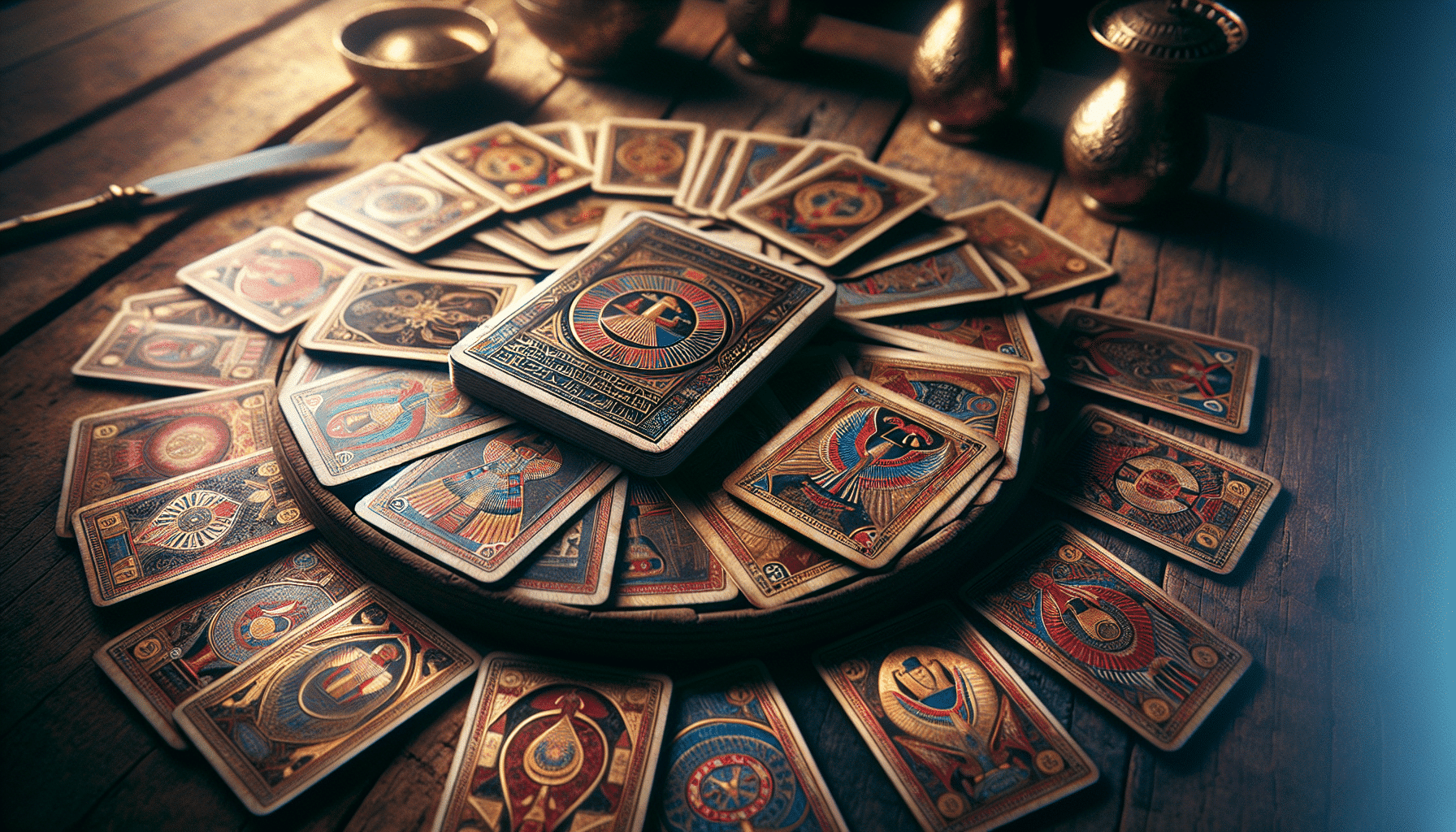
Now, let’s turn your attention to the role that Mamluk cards played in shaping modern tarot suits. You’ll find that their origins aren’t just a footnote in history, but a key to understanding the symbols you see today.
Notice how the intricate designs and motifs of these ancient cards have left a lasting imprint on the iconography of contemporary tarot decks.
Mamluk Origins
Tarot suits owe their lineage to the intricate designs of Mamluk playing cards, which you might recognize as the precursor to modern card decks. The Mamluk deck structure and card playing customs have significantly influenced the tarot as we know it.
To grasp the connection, consider these key aspects:
-
The Mamluk deck contained four suits, each with numbered and court cards.
-
Mamluk playing customs included trick-taking games, similar to those played with tarot.
-
Symbolism in the Mamluk cards has parallels with the tarot’s iconography.
-
The transmission of Mamluk card designs into Europe paved the way for tarot’s evolution.
Understanding this origin helps you appreciate how deeply history is woven into the tarot’s suits, enriching your knowledge of their significance.
Suit Symbolism Transfer
Delving into the history of tarot suits, you’ll find that the Mamluk deck’s symbolic elements were adopted by European card makers, giving rise to the familiar images in today’s tarot. This symbolic migration transformed the way card games and divination practices evolved in the West.
The Mamluk’s suit allegories – a precursor to cups, swords, coins, and polo sticks – were reimagined into hearts, spades, diamonds, and clubs in modern playing cards, and wands, cups, swords, and pentacles in tarot.
As you trace these symbols back, you’ll appreciate how suit allegories carried more than just aesthetic value; they conveyed societal roles and philosophical meanings that were deeply rooted in the culture of the time. Understanding this transfer enriches your grasp of tarot’s multifaceted history.
Tarot’s Transition to Europe
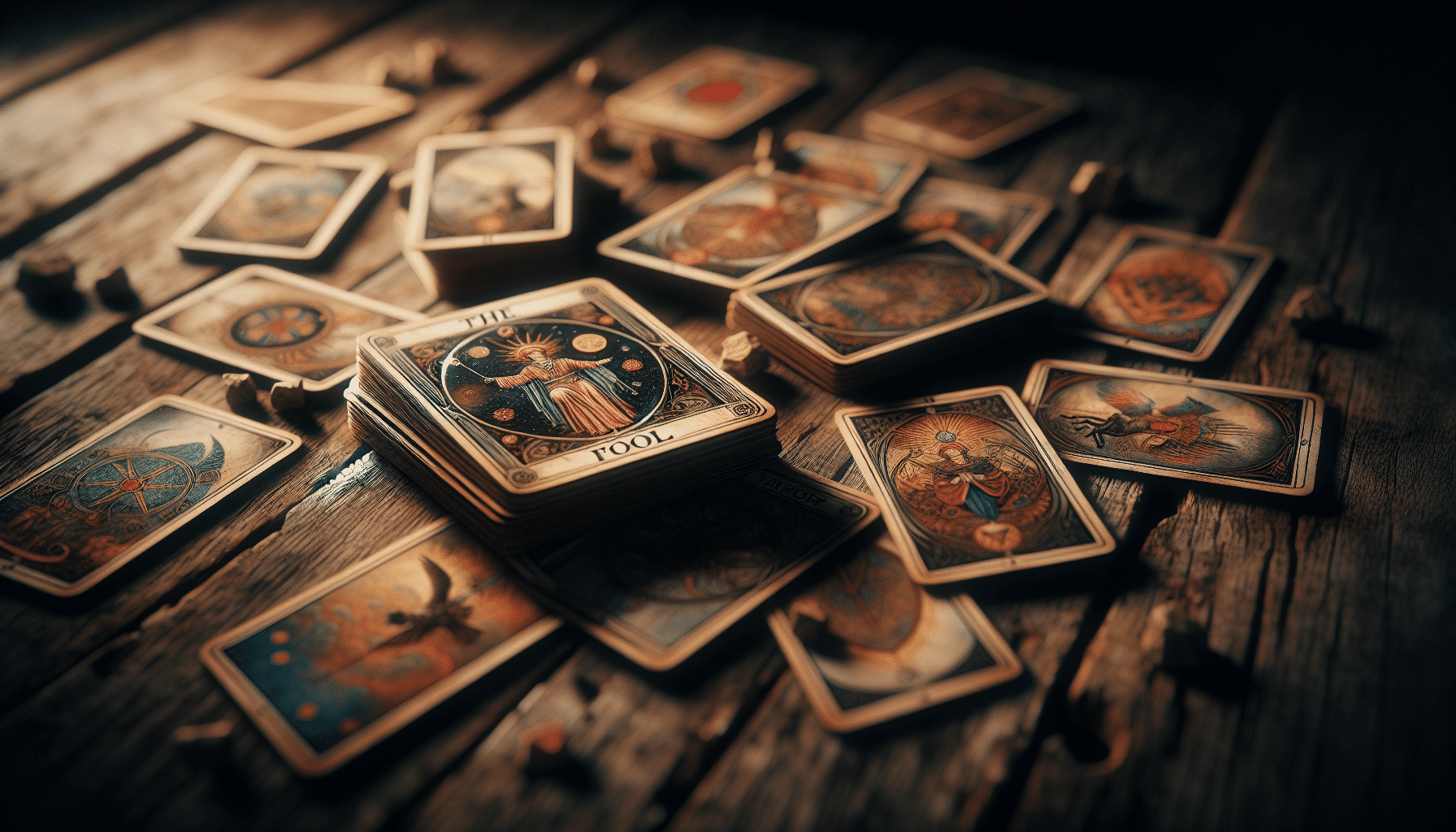
As you explore the history of tarot card suits, it’s essential to recognize that their transition to Europe marked a significant evolution in their use and interpretation. This period saw the integration of the tarot into European culture which was significantly influenced by existing card games and the representation of the royal court within the deck.
Here is how the transition unfolded:
-
Introduction of Tarot to Europe: The suits were likely brought over by merchants and travelers who encountered them in the Middle East and North Africa.
-
Adaptation to European Culture: Europeans adapted the symbols to reflect their own society, with cups, swords, coins, and batons becoming the standard suits.
-
Influence of Courtly Life: The imagery of the tarot began to incorporate elements of the royal court, making the cards relatable to European users and embedding the practice within the social hierarchy.
-
Growth of Tarot Card Games: As the tarot’s popularity grew, it became widely used for card games, influencing the structure and design of the suits to accommodate gameplay.
The journey of tarot suits into Europe is a testament to the adaptability and enduring appeal of tarot as a tool for both entertainment and introspection.
French and English Suit Adaptations
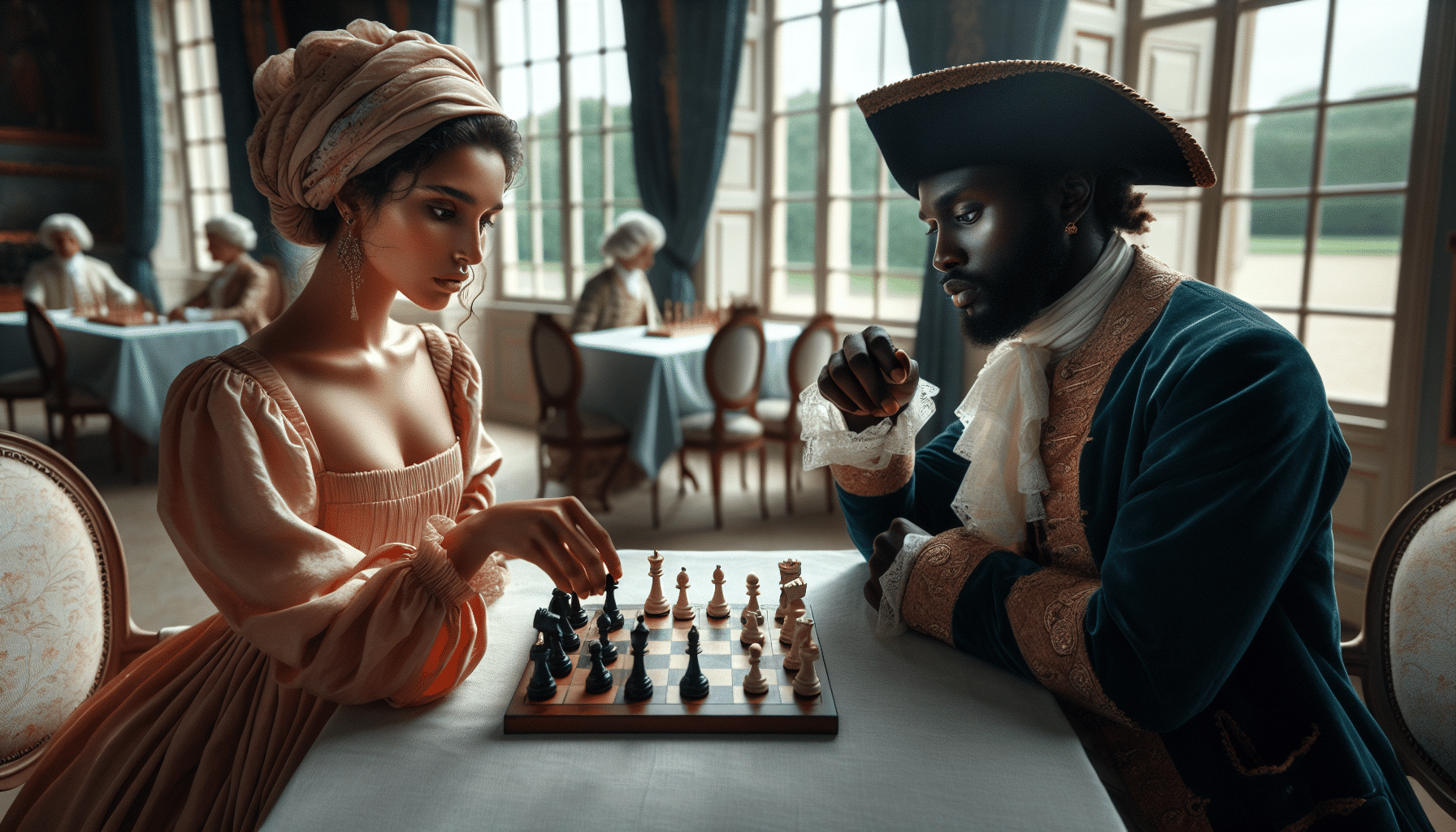
You’ll find that the tarot suits underwent significant adaptations as they were embraced by French and English cultures, further shaping their distinct identities and uses. The journey from Italian tarot to French and English decks reveals a fascinating playing card heritage, where each culture’s interpretation led to unique developments.
As the cards traveled, suit translation discrepancies arose. The French tarots adapted the traditional suits into what you might recognize in modern playing cards: hearts, diamonds, clubs, and spades. This change wasn’t just about design; it reflected the French taste and desire to standardize card games across their society.
In England, the French suits were adopted largely as they were, but you’d notice the names and symbols took on a more anglicized form, settling into the familiar shapes and terms used in card games today. This adaptation wasn’t merely cosmetic; it represented an integration of tarot into the fabric of English social entertainment.
Understanding these adaptations is crucial for you as it adds depth to your knowledge of tarot’s evolution. It also helps explain some of the variations you’ll encounter in tarot readings and card interpretations, bridging a historical gap that still resonates in the imagery and symbolism of the cards you use.
Tarot in Occult Traditions
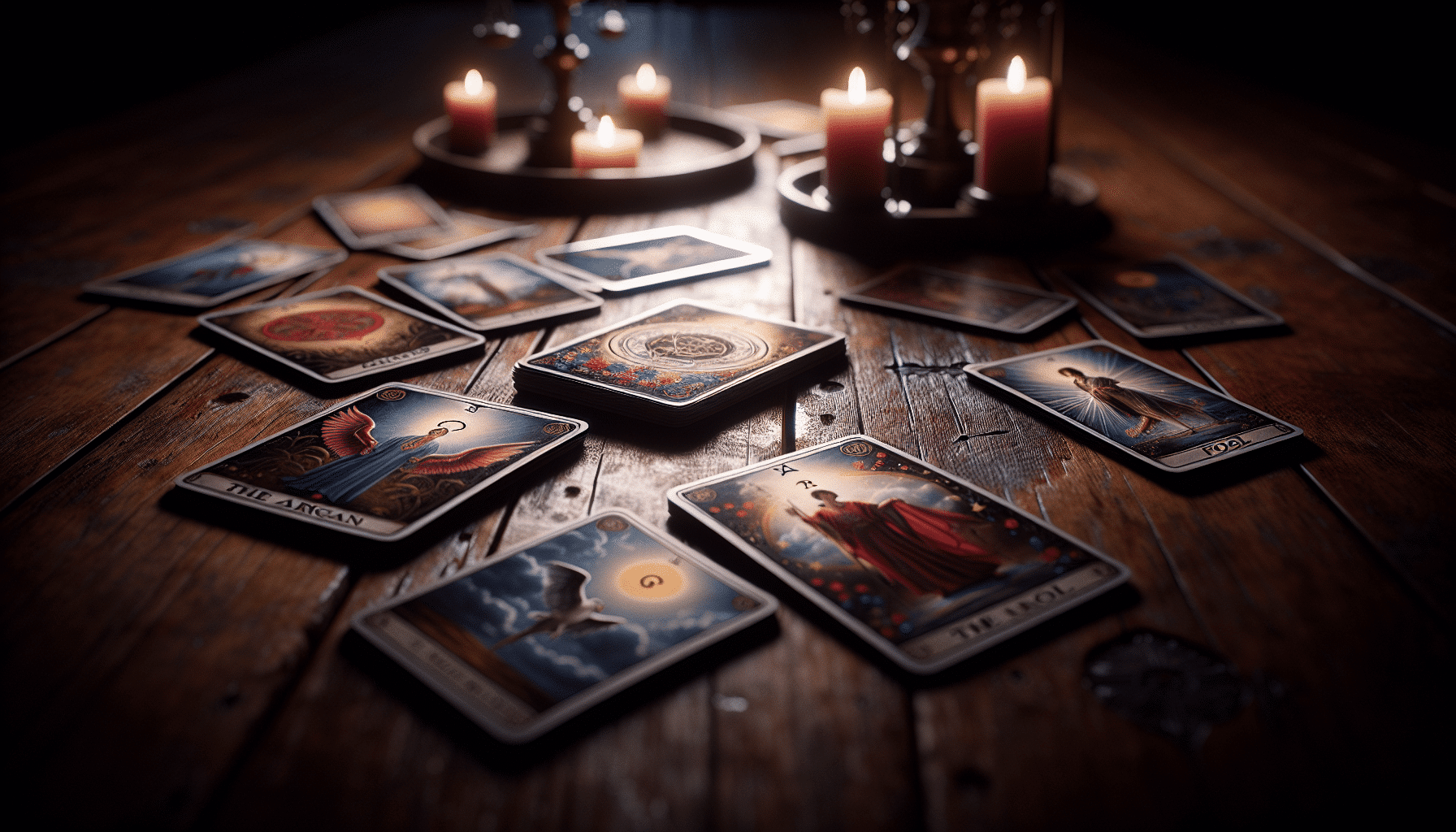
As you explore the tarot’s role in occult traditions, you’ll find that the cards’ symbolism is rich with esoteric meaning. These mystical origins aren’t just folklore; they’re a critical part of understanding how tarot functions within various metaphysical frameworks.
You’ll soon see how tarot’s imagery serves as a key to unlocking the secrets of the subconscious.
Occult Symbolism Interpretation
During the 18th century, you’ve seen tarot evolve from simple playing cards to a profound tool for occult symbolism and divination. As you delve deeper into the tarot’s mysteries, you’ll encounter esoteric archetypes and symbolic numerology that provide a rich framework for understanding the cards’ deeper meanings.
Here’s a brief guide to interpreting tarot’s occult symbolism:
- Major Arcana: Reflects life’s spiritual lessons and karmic influences.
- Minor Arcana: Symbolizes day-to-day events and personal experiences.
- Court Cards: Represent personality traits or actual people in your life.
- Suits: Correspond to the four elements (wands-fire, cups-water, swords-air, pentacles-earth) and aspects of human experience.
Tarot’s Mystical Origins
Tarot’s transition into the realm of occult traditions marked a pivotal shift in how you perceive its suits and symbolism. As you delve into tarot’s mystical origins, you’ll find that mystic practices often embrace tarot as a key tool for divination methods. The cards became more than just game pieces; they transformed into windows to the subconscious and tools for spiritual insight.
Here’s a table that highlights the correlation between the tarot suits and elements within occult traditions:
| Suit | Element | Occult Symbolism |
|---|---|---|
| Wands | Fire | Creativity, Will |
| Cups | Water | Emotions, Intuition |
| Swords | Air | Thought, Conflict |
Understanding this connection offers a deeper appreciation of tarot’s role in mysticism, as well as mysticism’s role in affecting the history of tarot card suits.
Modern Tarot Deck Diversity
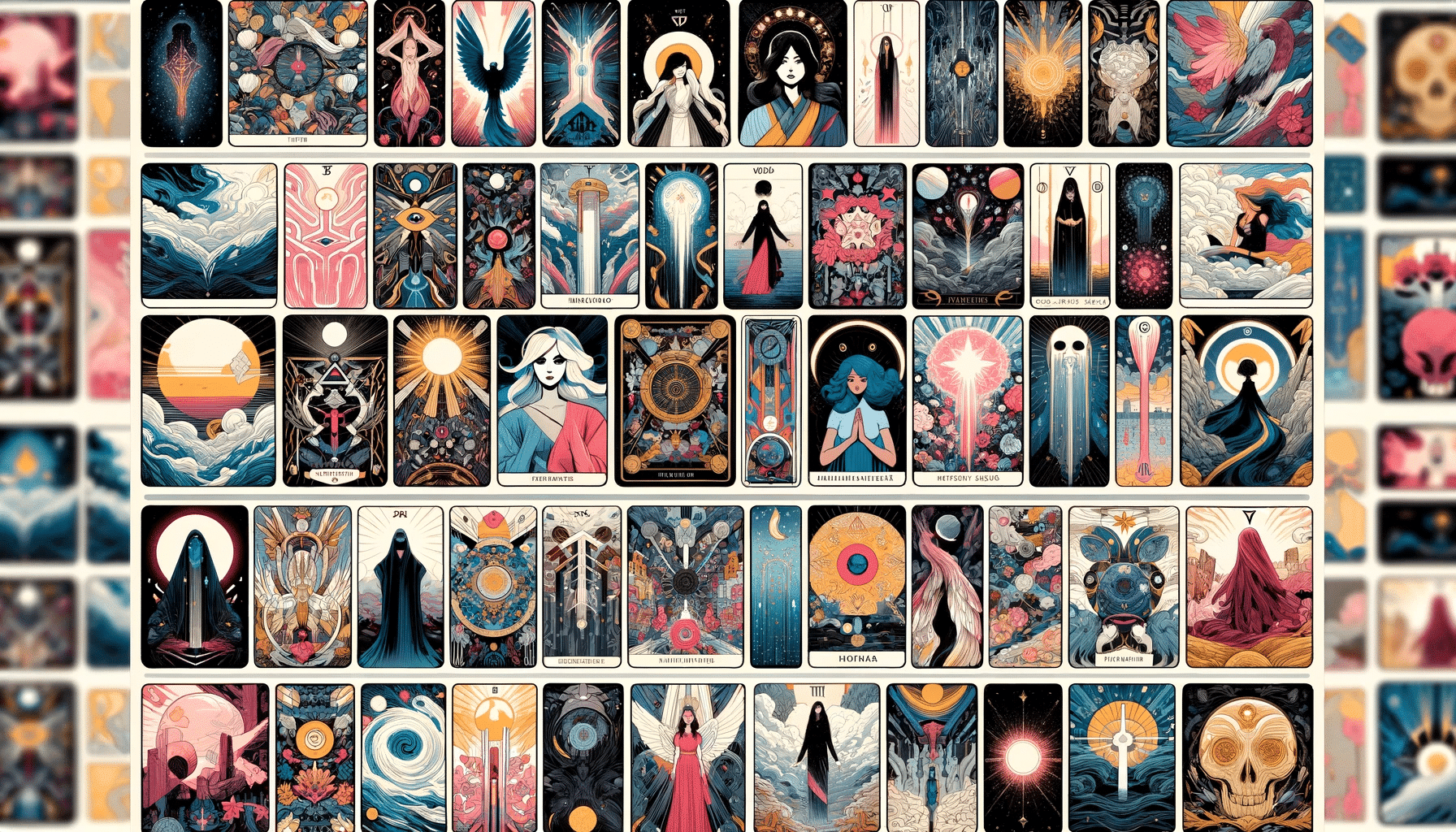
While you explore the history of tarot card suits, you’ll find that modern decks exhibit a rich diversity, reflecting an array of artistic styles, cultural backgrounds, and thematic variations. Deck aesthetics have evolved significantly, offering you a visual feast that can deeply influence your reading styles.
Whether you’re a seasoned reader or a curious newcomer, the variety available can enhance your connection to the cards and offer unique perspectives.
Here’s a snapshot of the diversity you’ll encounter:
-
Artistic Interpretations: From the traditional Rider-Waite-Smith imagery to abstract or minimalist designs, each deck presents a distinct visual language.
-
Cultural Representation: Decks now feature art that honors various cultures, mythologies, and historical periods, inviting a more inclusive approach to tarot.
-
Thematic Focus: Some decks are created around specific themes like nature, animals, or fantasy, allowing you to align with your personal interests or the querent’s.
-
Innovative Material: Beyond paper, decks are crafted using different materials like wood or metal, adding a tactile dimension to the reading experience.
The tarot’s evolution in design and representation ensures that you’ll find a deck that resonates with your unique path in tarot exploration.
The History of Tarot Card Suits in Popular Culture
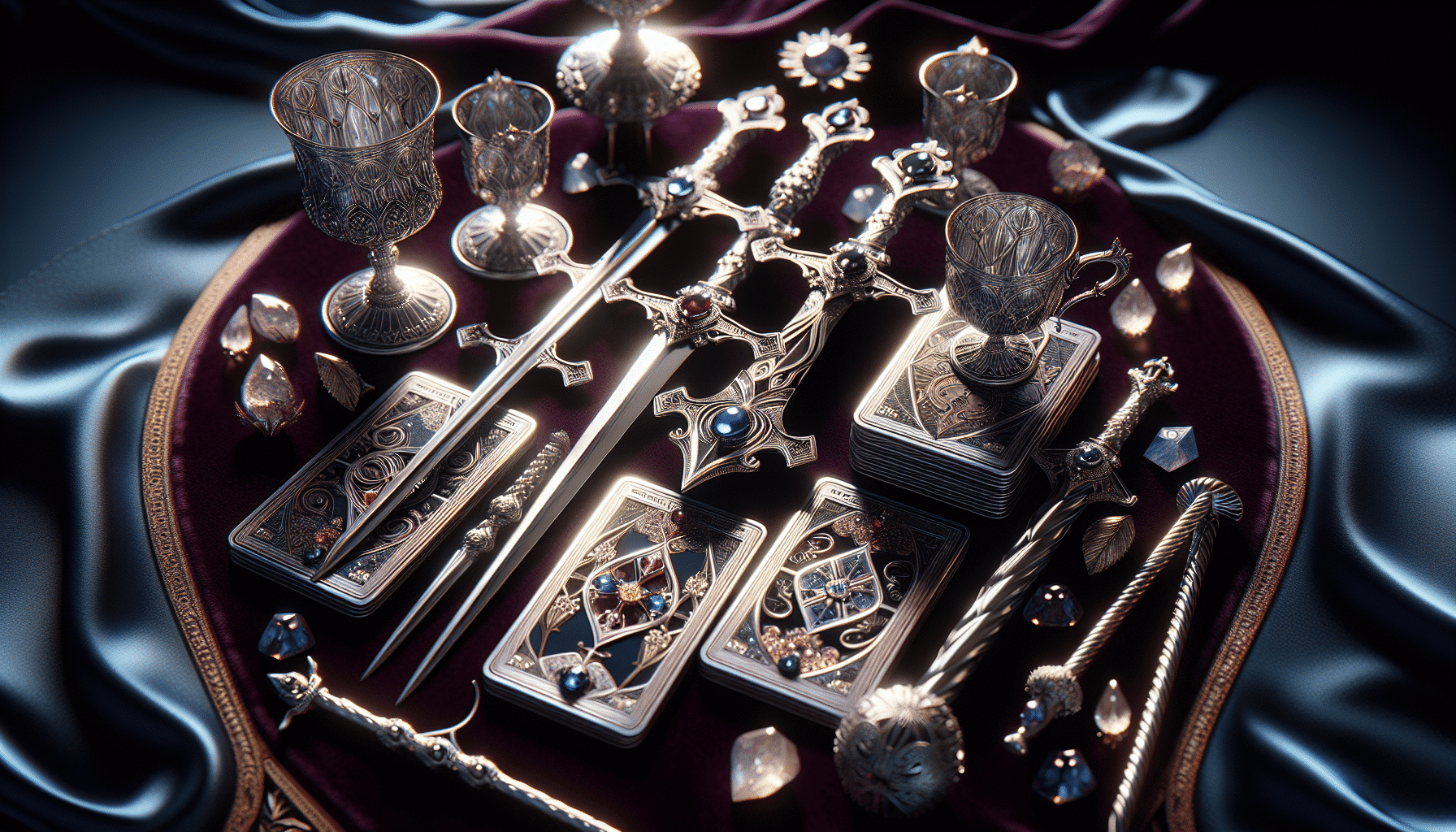
You’ve seen how modern decks vary in style and substance; now let’s explore how the four tarot suits have permeated popular culture, from movies to fashion.
The imagery of cups, pentacles, swords, and wands has captivated the imaginations of creators and consumers alike, leading to a surge in tarot themed merchandise. You can find these iconic symbols on everything from clothing and jewelry to home decor and stationery. They’re not just esoteric emblems anymore; they’ve become mainstream motifs that resonate with people’s love for the mystical and the aesthetic.
Cinematic tarot references are particularly notable. Directors often use tarot cards to foreshadow events or reveal a character’s psyche. The suits themselves, replete with deep symbolism, can add layers of meaning to a scene. You may have noticed a protagonist drawing a sword card before a significant conflict or a cup card preceding a romantic development. These subtle nods to tarot not only enrich the narrative but also pay homage to the tarot’s historical and cultural significance.
As you dive deeper into the world of tarot, you’ll start spotting these suits in unexpected places, highlighting their enduring influence and the timeless fascination they hold in collective consciousness.
Conclusion
As you sail the sea of time, your vessel – adorned with cups, pentacles, swords, and wands – navigates the ever-shifting waters of human consciousness.
Each suit, a compass by which to chart your course, reflects the elements that forge your spirit.
From the mystical shores of Renaissance Italy to the vibrant tapestry of modern decks, your journey through the tarot’s suits mirrors the eternal quest for wisdom.
Embrace the voyage, for in these cards lies the map of your soul’s odyssey.

About The Author – Allen Hill
Allen Hill, the force behind Unknown Truth Tarot, has a YouTube following 6-times bigger than the population of his hometown, Miamisburg, Ohio. From his spiritually rich blog on Tarot and crystals to his role as CEO of The Unknown Truth Tarot Metaphysical Shop, Allen’s passion for the metaphysical shines through.
A master Tarot reader and “crystal junkie,” Allen is also a devoted dad to Dylan, 10, and Destiny, 24. When he’s not immersed in the world of Tarot and crystals, he enjoys poker and video gaming sessions, often humorously outplayed by Dylan.
Follow Allen on Twitter, Instagram, Facebook, TikTok, and subscribe to his Unknown Truth Tarot YouTube channel to join him on a journey of spiritual growth and self-discovery.

